GROUNDBREAKING DISCOVERY: Scientists Capture Never-Before-Seen Sea Creatures on Camera in the Deepest Parts of the Ocean
The recent revival of the space exploration craze has attracted its fair share of criticism. These critics believe several spots on Earth are yet to be explored.
For example, it is estimated that a sizable chunk of the sea and ocean, which covers roughly 70% of the earth’s surface, is still unexplored. To this end, several explorers have taken to the oceans to map out the uncharted portions of the sea floor.
Early Efforts at Exploring the Sea
There have been many attempts at exploring the sea floors around the globe. However, little has been achieved due to a lack of sophistication in deep diving equipment and instruments.

Source: Wikimedia Commons
Between the 16th and 19th centuries, deep sea exploration was primarily speculative. It wasn’t until recent years that evidence-based research was carried out in the deep parts of the earth’s ocean.
How Sea Exploration Has Changed Over the Years
During the industrial revolutions of the iron age, ocean explorers mostly limited their sea exploration to determining sea depth at various points of the ocean. They estimated ocean depth by dropping specially designed probes to the bottom of the sea.
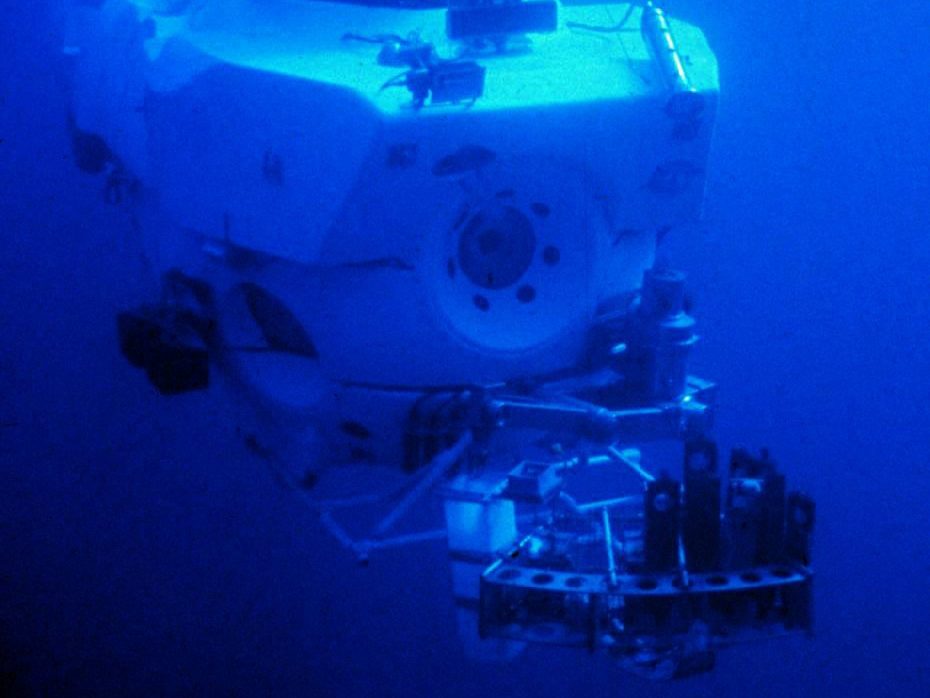
Source: Wikimedia Commons
However, with the invention of innovative technologies like sonar, submersible vessels, and cameras, such expeditions have become relatively more straightforward.
Disproving the Theory That No Life Forms Exist in Deep Waters
Early explorers bold enough to dive into deep portions of the oceans observed a sharp drop in biodiversity. So, they naturally assumed that hardly any life would exist in the lower parts of the sea.

Source: Sciencechannel/ TikTok
Such theorists believed places like the Mariana Trenches of the Indian Ocean could not support life. However, a team of scientists took the initiative of sending an autonomous probe to the bottom of the Indian Ocean to determine the kind of lifeform, if any, that lives there.
The Dark Abyss of the Indian Ocean
As the early oceanographers speculated, several factors make the survival of life at certain depths of the sea difficult. For example, there’s the pitch-black darkness that envelopes the depths of the ocean floor.

Source: Sciencechannel/ TikTok
It is difficult for natural light to travel beyond about 4000 ft of ocean depths. Likewise, there is an increase in pressure as you descend deeper to the bottom of the sea.
The Standing Water Analogy
An analogy will help you understand the crushing damage that water can do at certain depths. Imagine carrying a 20-litre container of water on your head; pretty straightforward, right? That’s about how much force you’ll feel when swimming to the bottom of a standard-sized pool.

Source: Needpix
Imagine hundreds of such 20-liter containers stacked on each other and placed on your head. Consequently, when a human or some aquatic animals free-dive to certain ocean depths, their organs implode from the water pressure, and they die.
The Discovery of New Aquatic Species
The exploration of the Mariana Trench of the Indian Ocean that led to this groundbreaking discovery was championed by Alan Jamieson (Ph.D.). This team of scientists sent an autonomous and submersible explorer to one of the deepest points (approximately 14,000 ft below sea level) in the trench, intending to discover the kind of creatures that live in such depths.
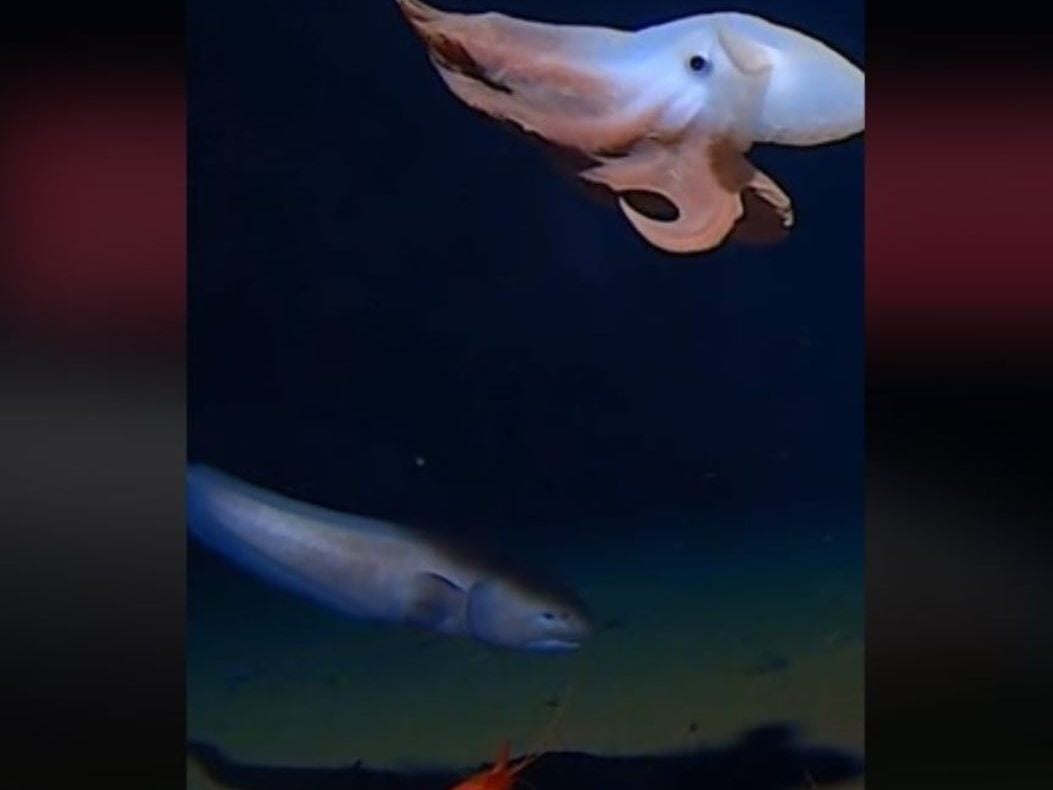
Source: Sciencechannel/ TikTok
The remotely operated vehicle (ROV) used for the study carried bait and was outfitted with a camera that could be remotely controlled for a panoramic view.
Cusk Eel
The ROV’s camera caught sight of its very first creature within ten minutes after touchdown on the seafloor. Dr. Jamieson and the other team of scientists were monitoring the visual feed from the ROV in the control room, and they could see their bait had attracted an eel-like fish.
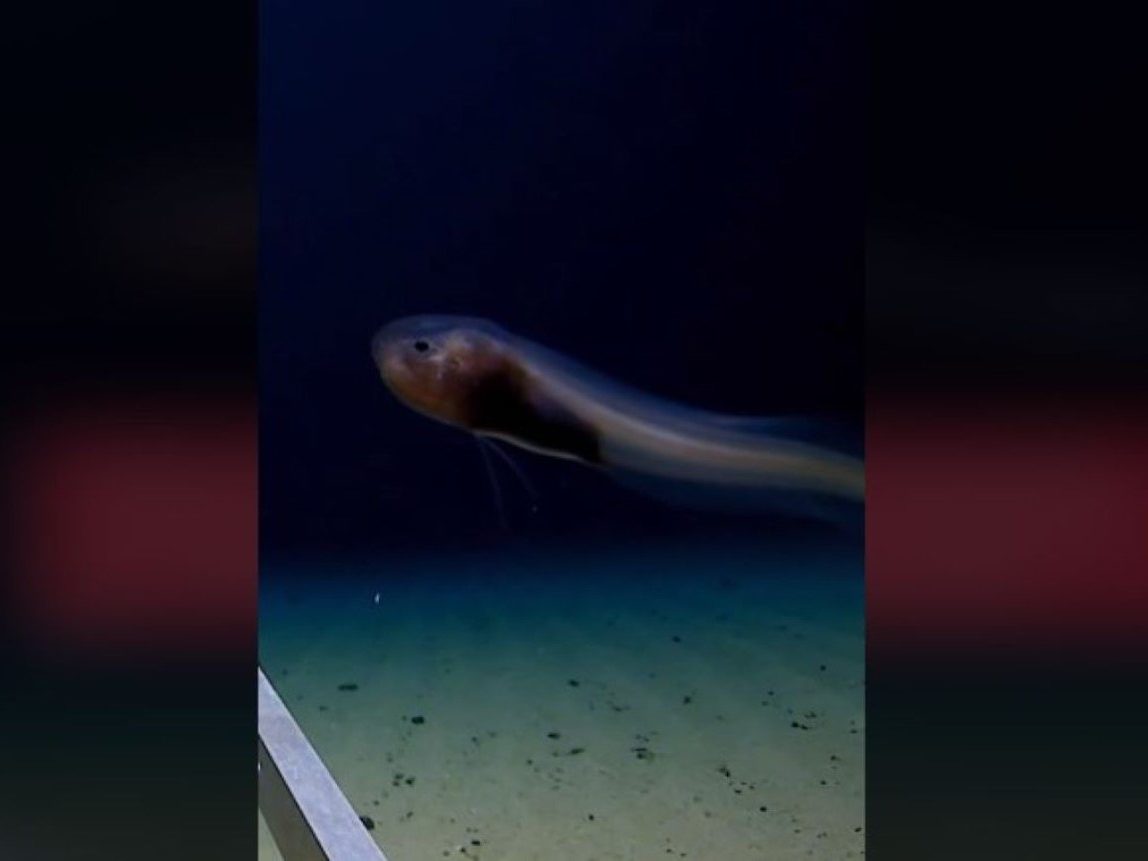
Source: Sciencechannel/ TikTok
Dr. Jamieson, a marine biologist, quickly labeled the fish as a Cusk Eel. However, he proceeded to mention to his colleagues that they had a new species on the screen. He pointed out its transparent skull and tail.
Marianna Snailfish
Another fish that appeared before the ROV’s camera was identified by the team as a snailfish. There are species of snailfish that thrive in shallow waters. However, the Mariana snailfish is a peculiar species that can withstand the phenomenal pressure and darkness peculiar to the Mariana trench.

Source: Sciencechannel/ TikTok
The muscles and bones must have unique designs that help them withstand the pressure.
The Assfish
The Assfish is known to be a major predator on the deep ocean floor. Beyond this information, little else is known about them. Besides the unusual name assigned to this elusive fish, some other peculiar physiological features make it adapted to the deep seafloor.
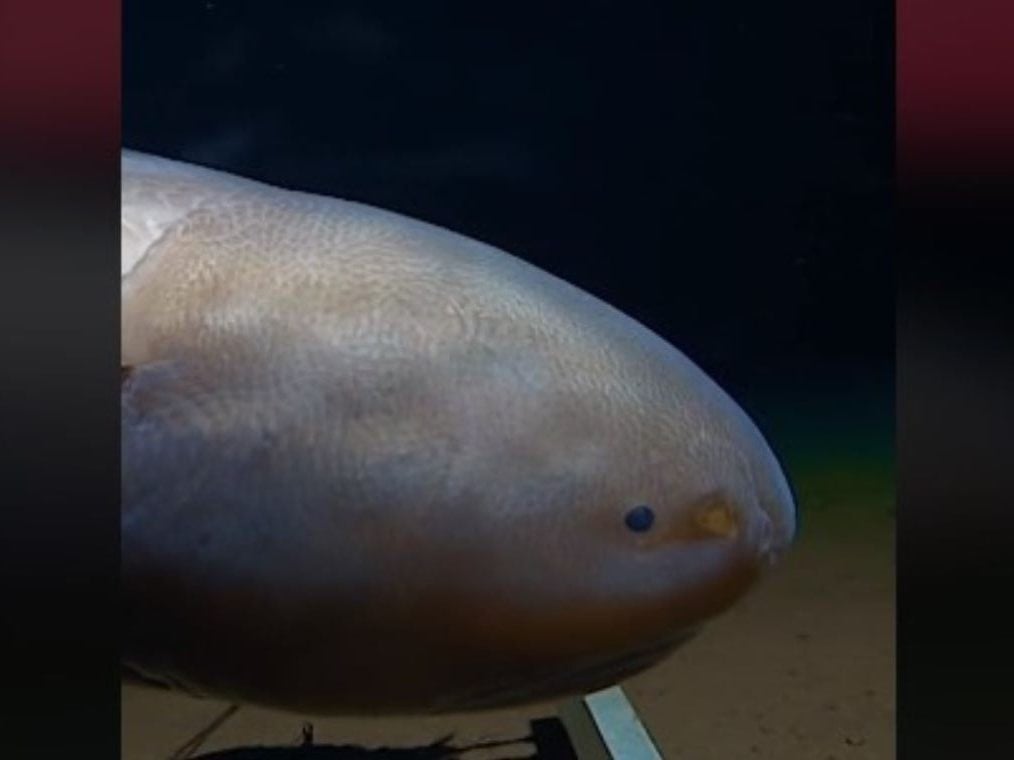
Source: Sciencechannel/ TikTok
For example, this particular Assfish has two pairs of large nostrils. Also, the skin lacks pigmentation, probably because of the prevalent darkness on the seafloor.
How the Assfish Hunts
Since it hunts mainly in the dark, this Assfish is known to have poor eyesight. Consequently, the Assfish probably relies heavily on its nostrils to identify the presence of prey.
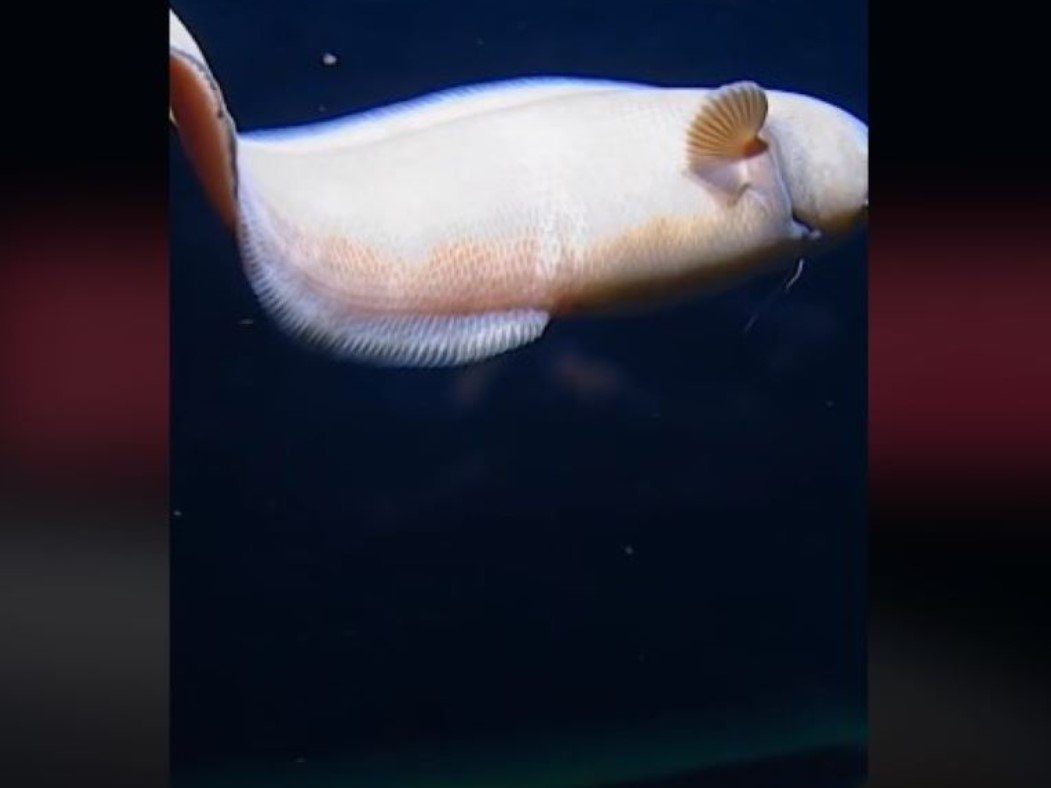
Source: Sciencechannel/ TikTok
The most prominent prey on deep sea floors are crustaceans like crabs and shrimps, and they make up the majority of the assfish’s diet. In the footage from the ROV, the Assfish ignored the bait fish and hung around until the crustaceans came around to feast before swooping in.
Dumbo Octopus
Octopuses are commonly found in the shallow waters of coral reefs. On the contrary, Dumbo Octopuses are found in deep water and were one of the creatures that showed up on the video feed of Jamieson’s exploratory team.
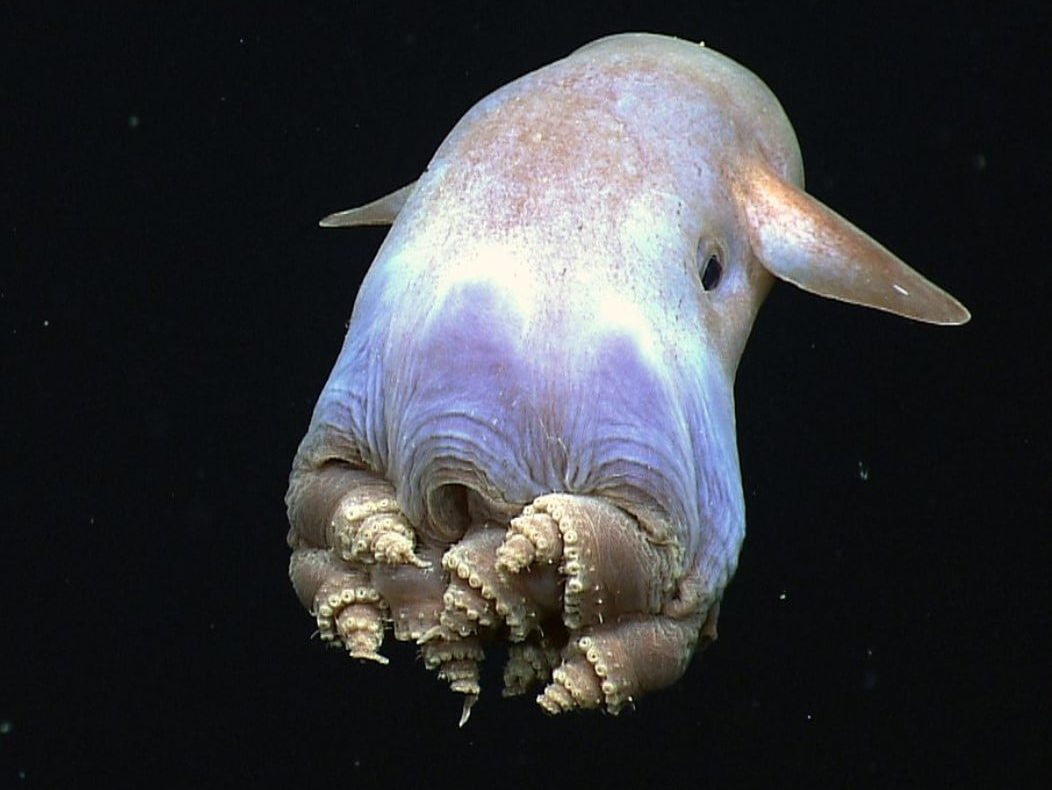
Source: Wikimedia Commons
Like the Assfish, the Mackerel used as bait was probably strange to this creature. So, the footage saw it hanging around until a juicy crustacean came for a bite of the bait.
Naming Dumbo
Before you start wondering what the origin of the name “Dumbo” is, it has something to do with the ears of an elephant. A close examination of the fins of the Dumbo octopus reveals that it does look like ears.
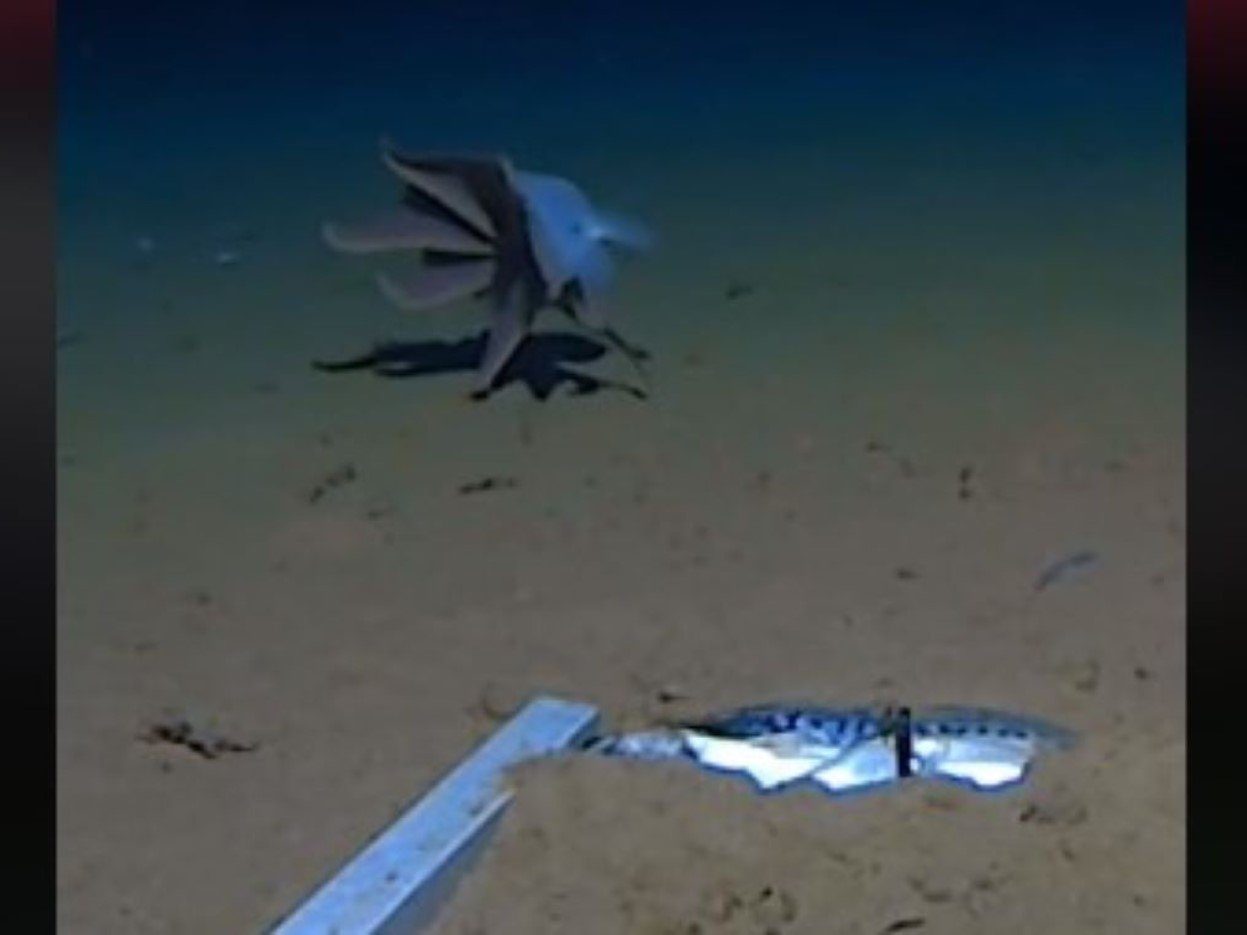
Source: Sciencechannel/ TikTok
Like its other deep-sea counterparts, Dumbo octopuses have very poor eyesight. To make up for this lapse, they navigate the darkness with the help of sensors that line up their tentacles.
Toeing the Line of Victor Vescovo
Victor Vescovo can be called a well-rounded explorer. He’s been to space when he participated in suborbital spaceflight. Vescovo has also visited the seven summits of the earth, including Mount Everest.

Source: Wikimedia Commons
Likewise, he has also visited the deepest points in the earth’s five oceans. It is in the shadow of the achievements of this retired naval officer that Jamieson and his team of scientists have gone out to identify the creatures ruling the Mariana Trench.
A Tour of the Deepest Part of the Five Oceans
It was easy for the Mariana Trench to appear on the bucket list of explorers like Vescovo. The Mariana Trench has been reported to drop to 35,876 ft at its deepest point.
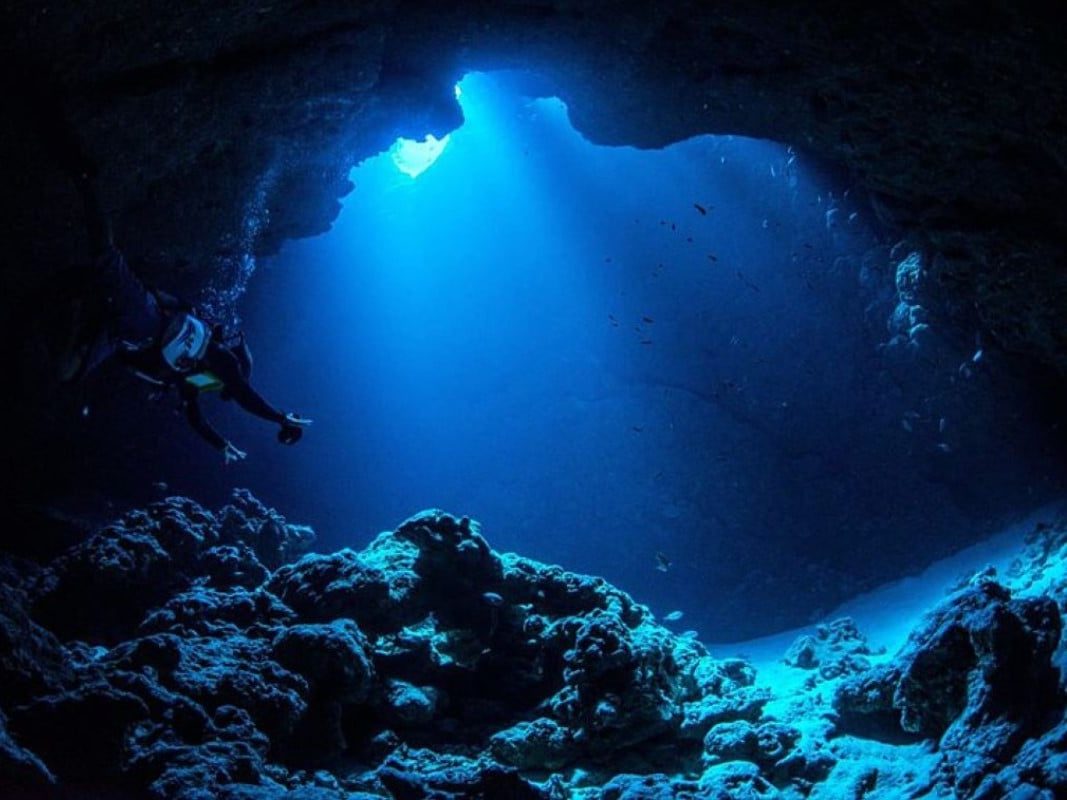
Source: Wikimedia Commons
The Mariana Trench is named after an archipelago nearby called the Mariana Islands. The creatures found in this deepest portion of the world’s oceans have proven that life can exist in the most inhospitable conditions.
